Driving away from Auckland in the first outing since we were allowed to travel (in the first set of COVID-19 restrictions) at the end of June – my first appointment in Hawke’s Bay is to catch up with Jen Cho and Kate Radburnd at Radburnd Cellars in Bay View. Kate should need no introduction, with a féted career and a Hall-of-Fame reputation; but I was keen to see what she was doing now, with a new label of wines that had made some noise amongst my peers.
WineFolio: I was just passing by Linden Estate on the way here and called in to see their new buildings – it’s looking very flash up there – that Barrel hall – wow, it’s like a cathedral!
Kate Radburnd: Yes, they are very kind to us, because when we operate vintage we need the floor space to be empty, so all our barrels go up there to their gorgeous barrel hall, so they are very helpful to us.
WF: I’m surprised how collaborative the NZ wine industry is? Michael at Kumeu River was telling me about how they borrow Tony’s kit from Soljans to help out with their Cremant sparkling for example. And I think that Sparkling, along with Chardonnay, could be a big thing for New Zealand.
KR: It’s interesting you say that, because when I was at Vidal we made Methode, and when I went to Pask we did that and George let me have the gear from Vidal because they weren’t using it – so that collaboration has always been there.
We etched our style where we left it on lees for about ten years, which was quite extraordinary. They’re worth having a look at. We’ve always loved Methode though – you talk about Chardonnay, and that early pick just gives it beautiful acidity and such a gorgeous base for all those styles.
WF: Yes, and I talked to Clive at Nautilus, where they leave their non-vintage on lees for about 3 years, which I thought was quite a stretch for non-vintage – the quality is excellent. Then I saw Rudi at Quartz Reef when I was in Central in February. So some real potential about. I was also amazed just how much of a patchwork some of Central is – Felton Rd in Bannockburn is just a quilt of small vineyards. I do wonder if some of the bigger operators might muscle in down there.
KR: I think they subtly have been. And I think the absolute charm is the small operators producing these completely unique one-offs really. Their own individual businesses.
KR: And that’s what Radburnd Cellars is about – this venture is all about us being able to do what we want to do how we want to do it, with no compromises. One of the reasons I’ve done so much judging over the decades, is because it keeps you in touch with all wine styles across all price points and it gives great context, to everything. We look at the New Zealand wine industry and Sauvignon Blanc and Pinot are well established, and we believe here in Hawke’s Bay it’s absolutely got to be about the top end. It’s got to be about quality. Nothing to do with volume. We are never going to compete on price. So we’ve just got to do it the best way we can. It’s as simple as that. Here we are just trying to do everything – from picking, making, to packaging – the best way we can.
WF: Did you feel you couldn’t do that at Pask?
KR: My evolution as a winemaker is culminating in what we are doing here. And when I started off everything was about being as bold, and as punchy and impactful as we could. I think as I’ve matured – which is now nearly forty years of making wine – everything couldn’t be the more opposite end of the spectrum. It’s all about subtlety, elegance, and about beautiful development.
And, in fairness, the Declaration range at Pask was an absolute expression of what as a winemaker we could do. I had started that range many years before, and it had started off on that bigger, bolder path. And if I was perhaps still at Pask now, there would be a subtle change to what we were doing. But the absolute refreshing thing about starting here is that it’s incredibly exhilarating to do it exactly as you want. With no encumbrance. That’s what we’re doing and I hope you’ll taste some of the wines today, and they are quite different in style.
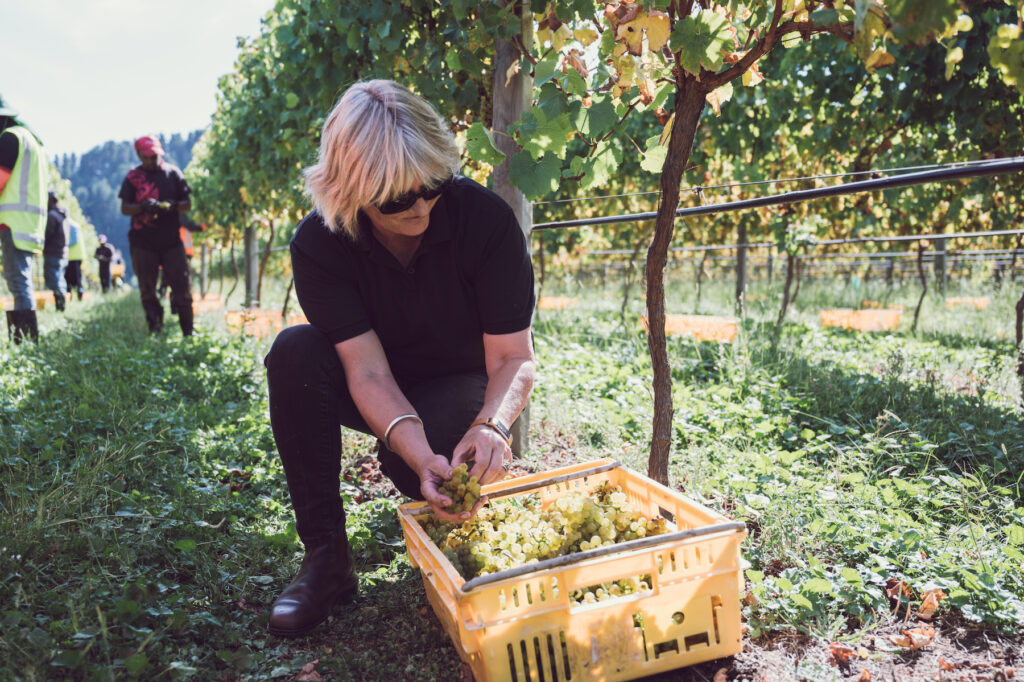
WF: How do you think it will go without having an entry level to your range? Are you planning on doing that?
KR: No, not currently. We’re just making small parcels of really special wine. There is no fallback position. And that’s where for us it’s really important that we have fabulous relationships with our growers. It’s all hand picked and hand sorted, so that if there were potential problems, that should have, and would have, been dealt with well before harvest time. Then I feel it’s my responsibility that everything’s got to translate to how we want it to be.
For example Ian and Linda Quinn at Two Terraces Vineyard are perfect partners for us. They are perfect for me – inland and elevated sites. The time they both spend in the vineyard – they are absolutely dedicated and meticulous. It just aligns perfectly with what we are trying to do.
Jen Cho: One of the interesting things is that when I joined, I asked Kate just what you asked – would we be looking to do a lower price tier?
And Kate replied “Jen, why would I? I want to do the best I can – I don’t want to spend time making everything else as well” So our focus is very clear – to produce the very best. And that’s a really nice environment to work within. Having that one purpose.
KR: And I’ve learnt that. That’s part of the evolution. We are not everything to everybody. We know that our market is much smaller.
WF: I think it’s right for someone like yourself, with the respect you have, to be able to say that.
KR: Before we even started this business we did a whole lot of market validation work. And we spoke with industry people, colleagues, consumers, other winemakers… just to sort out where we were at. When you next see Kingsley, he did say that he thought we needed a bit of gold on our labels!
WF: Did he? I thought it looks very Chanel?
KR: He loves gold, we have pursued ‘understated’ bravery, absolute simplicity.
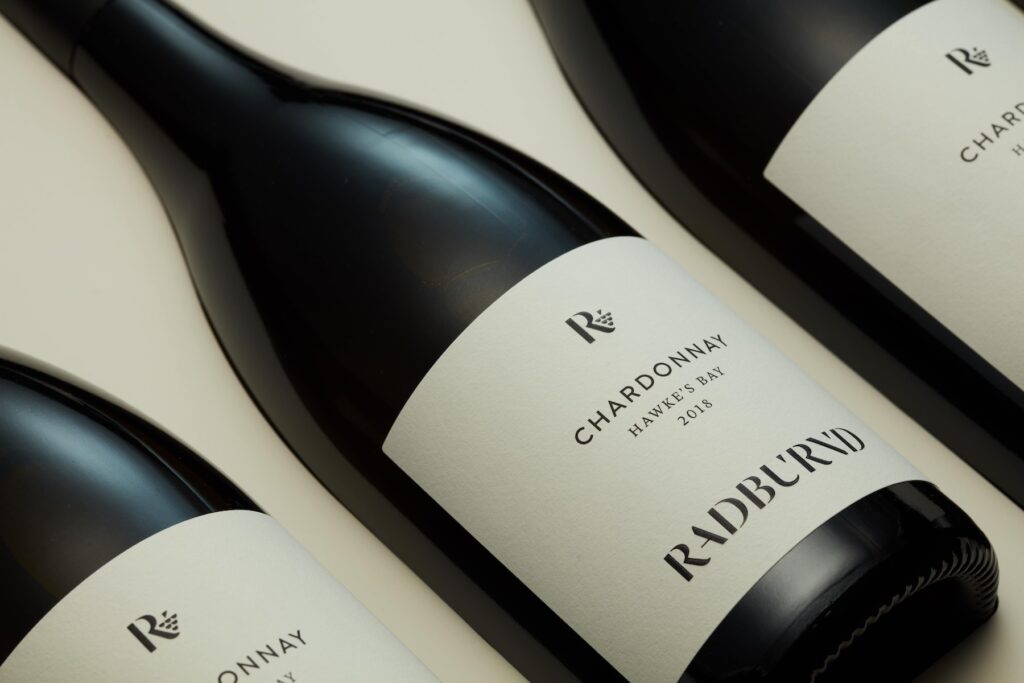
The Chardonnay comes from the Riverview vineyard. These are very old Mendoza chardonnay vines. Beautiful vineyard and lovely fruit. And the other vineyard is out at Bridge Pa – again old Mendoza, hand-picked.
WF: It’s very burgundian!
KR: Really? You don’t think it’s very New Zealand, very Hawke’s Bay?!
WF: It is as well. It’s a sort of marriage of the two. Burgundy in ethos, but Hawke’s Bay in personality. It’s not just all about the fruit, for the sake of it. It’s got that structure.
KR: I think Chardonnay is grown beautifully throughout New Zealand, not just in Hawke’s Bay, but I tend to see, certainly from the Mendoza that I’ve worked with over the years, that citrus backbone. Whether it’s grapefruit, lemon/lime, but we layer that with yeast contact and it just evolves beautifully over time.
We lease this winery, it was the old Wishart winery and had been empty for four years. So when I came in to make wine, I inoculated some as I just thought as it hadn’t been used for ages.
WF: I like that this doesn’t have that reductive quality. It’s quite pure, and ready as well – it’s right there already.
KR: We’re not looking for that reduction. We’re looking for purity of fruit, and the backbone of all the wines we make is that lovely fresh acidity that will age beautifully. This is made as a food wine, to be enjoyed around the table.
JC: We released this last August and it was tasting youthful, focussed and the citrus character was pulling through back then. But, boy in the last six months it’s quite incredible the evolution! That’s the beauty of this wine – it’s made to cellar over five years plus, so over time that’s going to be exciting.
WF: What’s the best aged New Zealand chardonnay you’ve had – something 15 years old maybe?
KR: That’s a really good question, I’d have to sit and think about that, but I wouldn’t hesitate to say I’ve seen 15 year old chardonnays that looked amazing. And I think we’re better at it now – our viticulture is much better than it was in the 80s, and the technology helps.
The chardonnay is 100% malolactic fermentation and it goes that through that quickly. I don’t tend to let these wines sit until Spring to go through malo, so I inoculate and it goes through quickly. I like to get the wines sulphured early and still lees stir, but deliberately made to keep it quite contained. I love the concentration from Mendoza, those little chicken berries. We have consistently used the same fruit from ‘18 ’19 and ’20, and the only change is the addition of Ian and Linda’s chardonnay from Two Terraces in 2020. Theirs is new, whereas the other two are 30-year old; so we’ve got their young vines and we’re really looking forward to continuing to work with them.
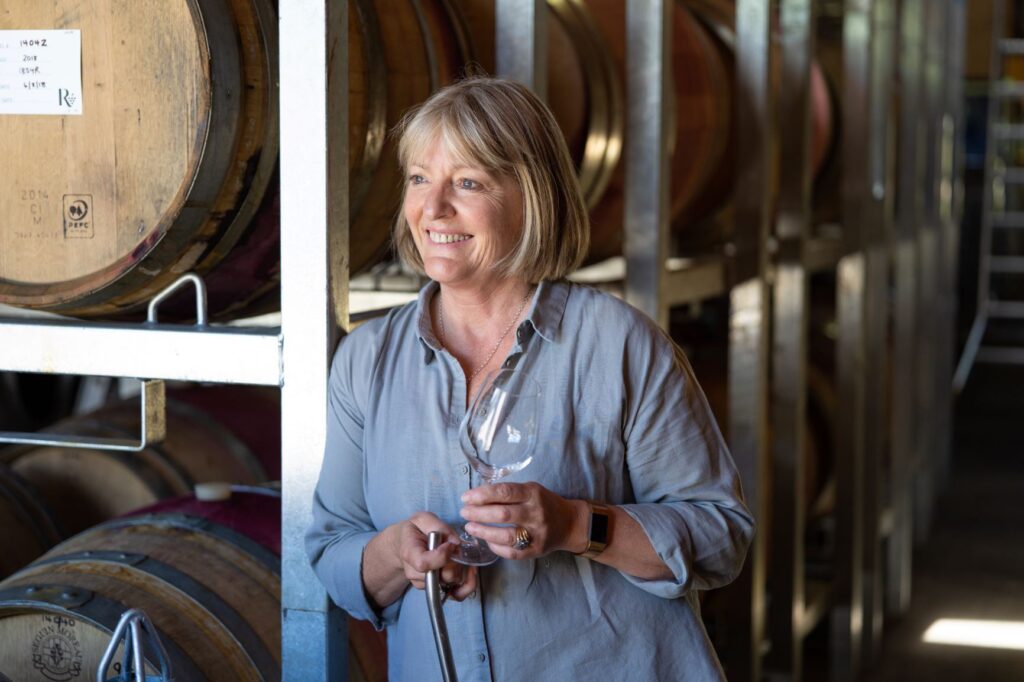
WF: What’s that going to do to the mix?
KR: I’ll bring you a sample out of barrel… again it’s got beautiful acidity. This is Ian and Linda’s – it’s out of a one-year old barrel.
WF: This is just theirs? You’ve kept it separate obviously?
KR: Yes, and it’s indigenous. I keep very single block separately as well, so I can see very enunciation. There’s certainly a freshness to that!
WR: Heck, that’s going to be fantastic!! Pineapple, and richness..
KR: What we’re really after, and it will be interesting when we try this Syrah. It’s that brightness of acidity that just really makes the fruit. I really believe the essence of New Zealand wine is the purity of fruit because we’ve got this wonderful long, cool growing season. We can concentrate these flavours.
That acidity brings it all together and makes it happen in the best way it can. I see that acidity and I can feel the fruit lifting.
JC: the beauty of being so hands-on here and the parcels of fruit is that Kate knows exactly every single barrel. They’re like different children. And the difference between each barrel is quite incredible when you taste them side by side. Could be the same parcel of fruit, picked at the same time, but one was wild fermented and the other was not. Being able to taste those differences to see what ingredients will go into the final blend is really interesting.
WF: I think it’s interesting that you would take first year fruit – almost a ‘brave’ move to incorporate that into wine.
KR: Well, I really want to work with him. You just know when you meet someone if you’re aligned in your thinking. I know they’ll produce the best possible fruit they can for us. And we’ll do the same in translating it into wine. They’ve been an absolute asset of an addition to Hawke’s Bay.
KR: So – Syrah. This also comes from an inland, elevated vineyard for a later and slower ripening in the Dartmoor Valley, and the rest is from the Bridge Pa triangle. Much darker, denser, richer fruit, whereas the other vineyard has more of those red fruits. As it has aged in barrel, you see softer blueberry-ish notes develop. All of the oak we use here is 3-year seasoned French oak. So, very deliberately, what we are after here is something that Syrah delivers very well – and that’s a length of flavour. They don’t have to be big, extracted wines to have a mouth presence that goes on and on. And I really think Syrah does that beautifully.
When we hand pick the fruit it gets chilled overnight so that it’s nice and cold when we process it in the morning. It goes on the sorting table and gets any last little bits that we need to out. Then we’ve got a Pellenc de-stemmer that’s designed for hand-picked fruit, and it de-stems and gives us perfectly whole berries. We do a little bit of foot stomping on some it – not all of it. And in the old days I’d be going for a hot ferment, adding tannin… but this doesn’t really get above 26 degrees. It’s just very gentle. We move the juice over the skins twice a day. This is still quite tight, but there’s some lovely fragrance there which I like as part of Syrah. I think that will just blossom in the bottle.
WF: It’s slightly Pinot-like. It’s got that beautiful delicacy to it, despite the ripeness of the fruit. Earthy and savoury. It sounds like I’m taking you away from the fruit – I’m not at all – that’s all there, but it’s not all about that. There’s something a whole lot more going on. Super juicy and heading in that blueberry direction. And not peppery – lots of exotic spice, but more cardamom, lavender or sumac and some glossy, balsamic notes.
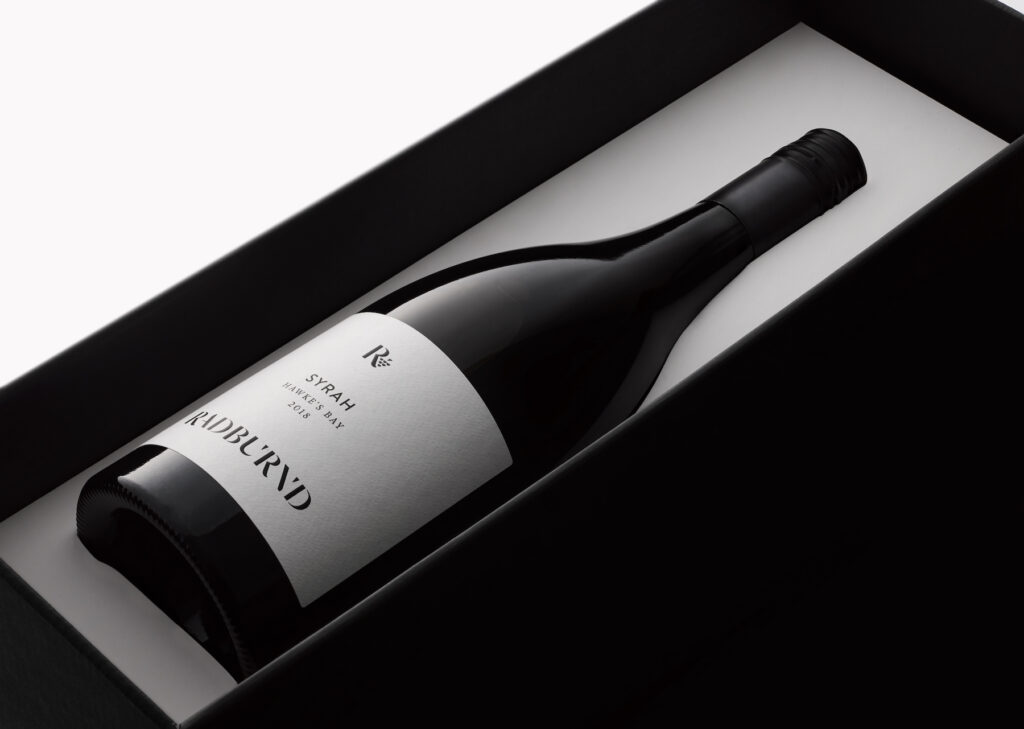
JC: An understated opulence. In 6 months time this is going to be very interesting. The chardonnay and this are obviously part of the same family. The style for Radburnd Cellars is very distinct.
KR: We’ve got a few Hawke’s Bay Syrahs lined up to try tomorrow, including the new Homage, and I think our style could be an outlier. I do think ours has a lovely elegance and it will blossom in the bottle.
WF: What is this? This is quite exciting too.
KR: That’s ’19 Syrah. That’s the two vineyards blended in there but it’s still in barrel. And I’ve got another couple of components that will go in there. It was a riper vintage. One of the things that we’re saying as a business is that we are embracing vintage variation. Because it’s small volumes and we hand-pick and we can do it perfectly – as in the way we want to do it.
Often the difference is showing vintage variation, and conditions. In the last vintage – which is our most full-on, impactful, busiest time, with everybody around. Well, the girls worked from home and I was here on my own, except for the days we process, when I could bring four people in to help. It was just so weird. The fact that we had lovely fruit helped enormously.
WF: I can see that Syrah becoming a ‘talked-about’ wine – like some of the hard to get wines like Kusuda or Bell Hill. Are you going to be in Duty Free – with that immaculate packaging?
JC: We are more focussed on selling direct to consumers because we want meaningful relationships with our customers. However, we do work with some fantastic partners who understand what we do and support us in sharing our story to their customers.
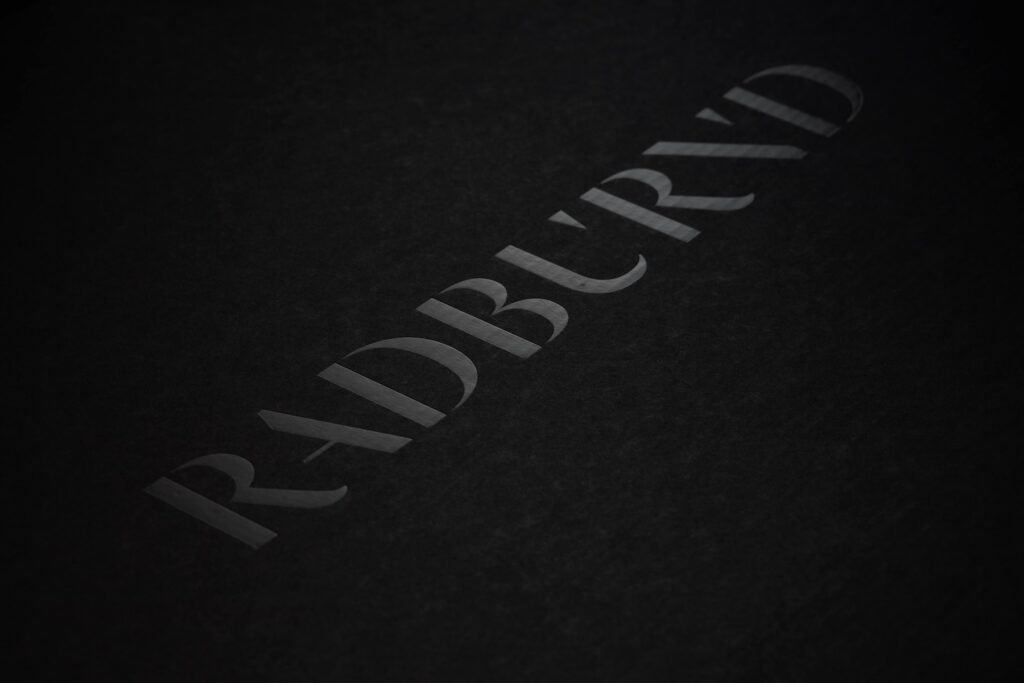

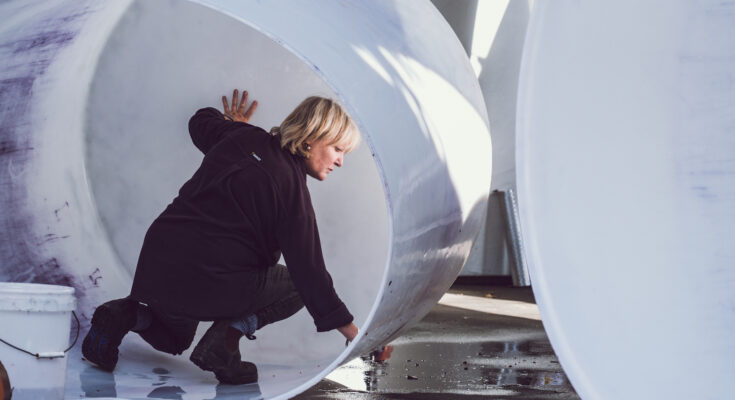
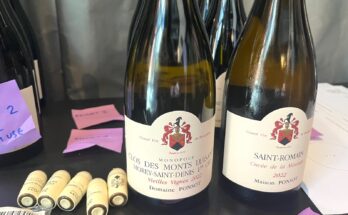
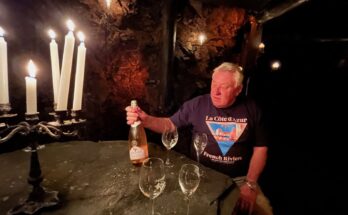
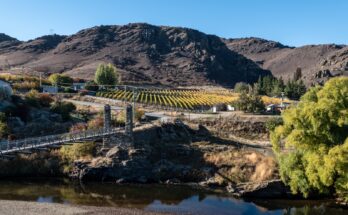
One Comment on “No compromises – Radburnd Cellars”